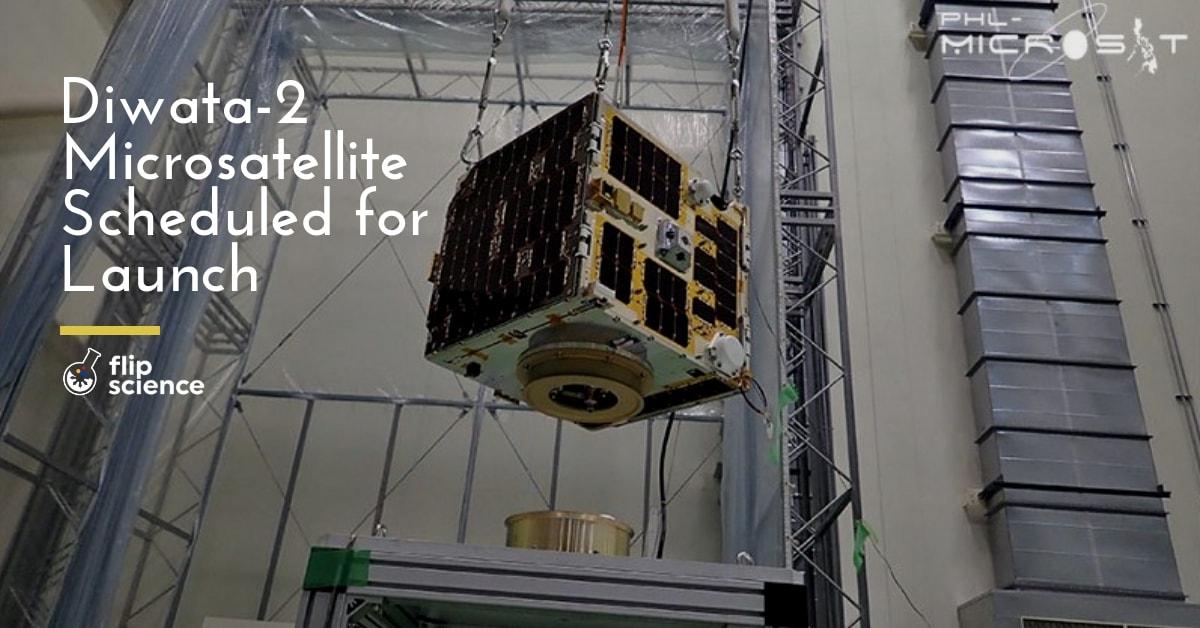Tomorrow, another Diwata will make like its namesake and take flight.
Diwata-2 is scheduled for launch on October 29, between 12:08 and 12:30 PM, from the Tanegashima Space Center in Japan. It will be part of the H-IIA F40 rocket’s secondary payload.
Diwata-2 is the Philippines’ second non-commercial microsatellite. It was built under the Development of Philippine Scientific Earth Observation Microsatellite (PHL-Microsat) Program, which is funded by the Department of Science and Technology (DOST) and monitored by DOST-Philippine Council for Industry and Emerging Technology Research and Development (PCIEERD). Collaborative efforts between the University of the Philippines Diliman, the DOST-Advanced Science and Technology Institute (ASTI), Hokkaido University, and Tohoku University allowed for the successful completion of the project.
Diwata-2 ready for take off
In 2016, the University of the Philippines and the nation made history with the release of Diwata-1, the first ever microsatellite designed and built by Filipinos. On October 29, 2018, the PHL-Microsat team will make history once more with the release of Diwata-2—its more technically advanced sibling—from the Tanegashima Space Center in Japan.
To reserve your slots for the live viewing of this historic launch at the GT Toyota Auditorium, UP Diliman, visit: https://bit.ly/2yU4hg3. Program starts at 11:00 AM. The event is free and open to the public.
Visit the PHL-Microsat Program website for more info: http://phl-microsat.upd.edu.ph
Follow PHL-Microsat and #D2nMe for updates.
Posted by University of the Philippines on Thursday, October 25, 2018
Diwata-2, alongside four other small satellites, will be launched with IBUKI-2 (also known as GOSAT-2, or the Second Greenhouse Gases Observing Satellite of the Japan Aerospace Exploration Agency (JAXA)) and KhalifaSat (a remote sensing Earth observation satellite from the United Arab Emirates’ Mohammed bin Rashid Space Centre (MBRSC)).
Maintaining momentum
Diwata-2 will orbit at an altitude of ~620km for an increased lifespan and a sun-synchronous orbit. This will enable fixed revisit intervals, making repeated environmental monitoring of specific areas possible.
Like its predecessor Diwata-1, it will also carry a Wide Field Camera (WFC), Middle Field Camera (MFC), High Precision Telescope (HPT), and Spaceborne Multispectral Imager (SMI) with Liquid Crystal Tunable Filter (LCTF). All these mission instruments underwent rigorously calibration and testing to guarantee optimal performance within Diwata-2’s orbital conditions.
In addition, Diwata-2 will have deployable solar panels for increased power output. It will also have an Enhanced Resolution Camera (ERC) for increased SMI image resolution. Furthermore, it will feature two locally made experimental modules: an Amateur Radio Unit for emergency communications, and a Satellite Orientation Module for increased pointing accuracy and future satellite development initiatives.
Pinoy space “magic”
Planning and design for Diwata-2 began in 2016, right after Diwata-1’s deployment from the International Space Station (ISS). Diwata-2 has since undergone major iterations, including a simulation model, a mechanical test model, an engineering model, and the final flight model. The Diwata-2 Flight Model was completed on August 29.
Both Diwata-1 and Diwata-2 are Earth-observing microsatellites capable of capturing images of Earth for environmental assessment. The Philippine Earth Data Resource Observation Center (PEDRO) will manage satellite control, operation, and acquisition of experimental data.
More than building and launching satellites, the Philippines aims to establish a healthy and sustainable local ecosystem for space technology. The PHL-Microsat Program is succeeded by the Sustained Support for Local Space Technology and Applications Mastery, Innovation and Advancement (STAMINA4Space) Program. The program aims to build a local industrial base and enhance local space science and engineering expertise, in preparation for the establishment of the Philippine Space Agency. –MF
Reference:
- Official press release from PHL-Microsat.
Author: Mikael Angelo Francisco
Bitten by the science writing bug, Mikael has years of writing and editorial experience under his belt. As the editor-in-chief of FlipScience, Mikael has sworn to help make science more fun and interesting for geeky readers and casual audiences alike.







